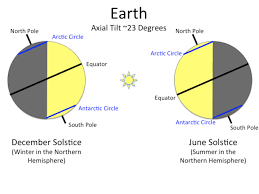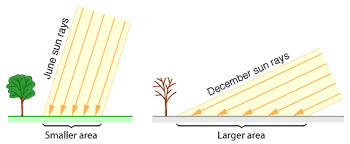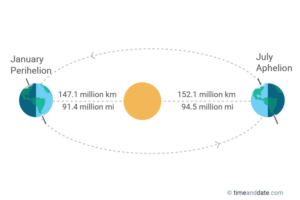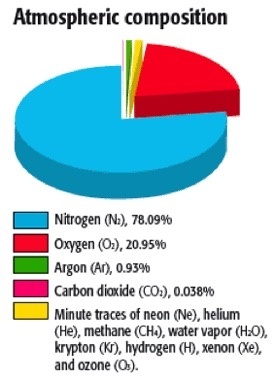Wave is a phenomena of transportation of energy through a chain reaction.
WAVE TYPES
Longitudinal waves
What is a
Transverse waves
Take a
LIGHT WAVES
What we call Light is actually a combination of 7 different types of waves.
X-RAYS
X-rays are electromagnetic radiation with wavelengths between about 0.02 Å and 100 Å (1Å = 10-10 meters). They are part of the electromagnetic spectrum that includes wavelengths of electromagnetic radiation called visible light which our eyes are sensitive to (different wavelengths of visible light appear to us as different colors). Because X-rays have wavelengths similar to the size of atoms, they are useful to explore within crystals.
The energy of X-rays, like all electromagnetic radiation, is inversely proportional to their wavelength as given by the Einstein equation: E = hν = hc/λ
Thus, since X-rays have a smaller wavelength than visible light, they have higher energy. With their higher energy, X-rays can penetrate matter more easily than can visible light. Their ability to penetrate matter depends on the density of the matter, and thus X-rays provide a powerful tool in medicine for mapping internal structures of the human body (bones have higher density than tissue, and thus are harder for X-rays to penetrate, fractures in bones have a different density than the bone, thus fractures can be seen in X-ray pictures). |
Production of X-rays in Lab:
X-rays are produced in a device called an X-ray tube. Such a tube is illustrated here. It consists of an evacuated chamber with a tungsten filament at one end of the tube, called the cathode, and a metal target at the other end, called an anode. Electrical current is run through the tungsten filament, causing it to glow and emit electrons. A large voltage difference (measured in kilovolts) is placed between the cathode and the anode, causing the electrons to move at high velocity from the filament to the anode target. Upon striking the atoms in the target, the electrons dislodge inner shell electrons resulting in outer shell electrons having to jump to a lower energy shell to replace the dislodged electrons. These electronic transitions results in the generation of X-rays. The X-rays then move through a window in the X-ray tube and can be used to provide information on the internal arrangement of atoms in crystals or the structure of internal body parts.
When the target material of the X-ray tube is bombarded with electrons accelerated from the cathode filament, two types of X-ray spectra are produced. The first is called the continuous spectra. The continuous spectra consists of a range of wavelengths of X-rays with minimum wavelength and intensity (measured in counts per second) dependent on the target material and the voltage across the X-ray tube. The minimum wavelength decreases and the intensity increases as voltage increases.
The second type of spectra, called the characteristic spectra, is produced at high voltage as a result of specific electronic transitions that take place within individual atoms of the target material.
Powder method:
In practice, this would be a time consuming operation to reorient the crystal, measure the angle θ, and determine the d-spacing for all atomic planes. A faster way is to use a method called the powder method. In this method, a mineral is ground up to a fine powder. In the powder, are thousands of grains that have random orientations. With random orientations we might expect most of the different atomic planes to lie parallel to the surface in some of the grains. Thus, by scanning through an angle θ of incident X-ray beams form 0 to 90o, we would expect to find all angles where diffraction has occurred, and each of these angles would be associated with a different atomic spacing.
(source: https://www.tulane.edu/~sanelson/eens211/x-ray.htm)
GRAVITATIONAL WAVES
Click next to know about the Gravitational Waves and LIGO. .
SOUND WAVES
What .
OPTICS
What is a Shadow? The area blocked from light is called shadow.
Experiment: Take a black paper and stick a smilie on it and then paint the rest of the paper. Now remove the smilie. The dark circle you see is the equivalent of a shadow.
Now go to a dark room. Hold a spoon upon the black paper and throw a flashlight upon the paper. You will see an area (similar to spoon shape) blocked by the light of your torch. That is shadow.
A shadow is of the same shape as the object blocking the light.
Experiment: Can you have colourful shadow?
Schlieren effect: Click here to understand Schlieren optics for a better understanding of the behaviour of air density, sound density, refraction, etc.. For practical demo See here and for setting it up, see here. .
For Learners:
DIYHA (do it yourself home activity):
1. Practical 1
2. Practical 2 .
3. Take the School Exam Quiz on this topic, Click here.
For Educators:
1. Write down .
2. Write
RISHI Challenge:
Frame a short Sanskrit sutra explaining the
Mapping:
These topics map to chapter ….. of Grade …… Physics of CBSE board.
measuring your latitude & longitude
SEE HOW LAND CAUSES THE AIR TO HEAT UP
SOUND WAVES
Have you.
For Learners:
DIYHA (do it yourself home activity):
1. Practical 1
2. Practical 2 .
4. Take the School Exam Quiz on this topic, Click here.
For Educators:
1. Write down .
2. Write
RISHI Challenge:
Frame a short Sanskrit sutra explaining the
Mapping:
These topics map to chapter ….. of Grade …… Physics of CBSE board.
How DOES MEDIUM AFFECT SOUND WAVES?
SEE HOW LAND CAUSES THE AIR TO HEAT UP



Detailed reading: Seasons on Earth
If the earth were straight on its axis, the Equator would have seen constant summer. But the fact is that Earth’s axis is tilted at 23.5º. Hence, as the equator moves down (apparently), the Northern Hemisphere gets summer. And as the equator moves up, the Southern Hemisphere gets summer. As the earth moves around the sun, various latitudes come in the direct line of sun, thus causing the change in season (see Insolation for more details).
Around 21/3, the equator is in the direct line of sun, making equator the most hot part. Rest of the cities on both sides are as cooler as they are far from the equator, the poles being the coldest. This is called March or Spring Equinox. Now day will begin to rise in the north pole.
Around 21/4, 8ºN is in the direct line of sun, making cities like Panama City among the most hot ones. Farther places on both sides are cooler, the south pole being the coldest (even more cold than it was around 21/3) and north pole seeing continuous daylight.
Around 21/5, 16ºN is in the direct line of sun, making cities like Yangoon, La Paz, etc. among the most hot ones. Rest of the cities on both sides are as cooler as they are far from 16ºN, the south pole being the coldest. North pole is witnessing relatively warmer and continuous days.
Around 21/6, the latitude of 23.5ºN, i.e the Tropic of Cancer, is in the direct line of sun. This makes cities like Canton, Ahemdabad, Havana, etc. among the most hot ones (Havana least among these. Why?). This time is known as Summer Solstice. This is the warmest time at north pole and coldest at south pole.
This is northernmost latitude which can come in the direct line of sun. After this limit, the latitude starts receding again towards the equator.
Thus, around 21/7, 16ºN is again in the direct line of sun and most hot.
Around 21/8, 8ºN is again in the direct line of sun and most hot.
Around 21/9, i.e, after about six months, the equator is again in the direct line of sun and most hot. This is called September or Autumnal Equinox. Both the poles are about equally lit and warm. Now six-month night will begin to fall in the north pole and six-month day in the south pole.
Around 21/10, 8ºS is in the direct line of sun and most hot. Rest of the cities on both sides are as cooler as they are far from 8ºS, the north pole being the coldest, with continuous nights.
Around 21/11, 16ºS is in the direct line of sun and most hot. Rest of the cities on both sides are as cooler as they are far from 16ºS, the north pole being the coldest, with continuous nights.
Around 21/12, the latitude of 23.5ºS, also known as the Tropic of Capricorn, is in the direct line of sun, making cities like Sau Paulo among the most hot ones. This time is known as Winter Solstice. This is the coldest time at north pole and warmest at south pole.
This is southernmost latitude which can come in the direct line of sun. After this limit, the latitude starts acceding again towards the equator.
Thus, around 21/1, 16ºS is again in the direct line of sun and most hot.
Around 21/2, 8ºS is again in the direct line of sun and most hot.
Around 21/3, the equator is again in the direct line of sun and most hot. We are back to March equinox. The South Pole will now go under a six-month continuous night and the North Pole under a six-month continuous day.
Proximity to Sun also plays some role in temperature at a given place on earth. Earth is at Perihelion (nearest to sun) around January 5 and at Aphelion (farthest from sun) around July 4. Recall that in early January, southern hemisphere is in the direct line of sun. This means that the sun rays fall normally in the southern hemisphere and have to travel a shorter distance because Earth is in Perihelion. Thus, the two effects re-enforce each other and accentuate the hotness in S.H. A similar situation obtains in early July when the southern hemisphere receives oblique sun rays and the Earth is at Aphelion. Again, the two effects re-enforce each other and accentuate the coldness in S.H. This causes Southern Hemisphere seasons to be somewhat more severe than the seasons in Northern Hemisphere. However, water neutralizes this severity to some extent.
Water Landmass distribution also plays its role in temperature at a given place on earth. Water being a poor conductor of heat compared to land, acts to moderate the temperature (to be more precise, the Specific Heat of water is more than land). If you see the Globe carefully, you will note that the southern hemisphere has less landmass and more ocean water than the northern hemisphere. The excess water present in the S.H has a moderation effect on its seasons (because circulations in the upper ocean replenish warm surface water. This, in effect, causes the air mass over the oceans to be relatively warmer than the air mass over the land).
This moderation effect of water plays its role everywhere on earth. This is the reason why Havana, surrounded by ocean, will be less hot than Canton on the day of Summer Solstice in spite of the two cities being at the same latitude.
Water is also the reason for giving rise to cyclones during winter in the N.H. During the winter in NH the intensity of sunlight is low. As a result, the cold air masses build up over North America, Europe, and Asia. On the other hand, the air masses over the oceans are much less affected by this coldness. The strong temperature contrast between the cold air masses over land and the relatively warmer air masses over the ocean leads to formation of low-pressure cyclones in non-tropical areas. These storms are much more frequent and intense in the winter than in the summer.
Now watch the figures and videos above carefully again.
Practical 1 (insolation):
1. Set up a room which is dimly lit. Arrange a black paper sheet on a table. Take a flash light and fix it steady in some stand such as a table-lamp or a tripod.
2. Arrange the flash light such that it is exactly over the sheet, i.e at 90º with the sheet. Switch on the flash light and you will see a circle of light. Draw out the boundary of this illuminated circle with white ink.
3. Now tilt the torch by about 23-24º (without disturbing its position). You wil see that the circle of light has become an ellipse. Again draw out the illuminated ellipse with white ink. What do you conclude?
4. Now place the flash light stand in front of a globe, about 2 feet away, such that the flash light points the globe at 90º.
5. Switch on the flash light and note the circular area illuminated by the light on the globe. Note the cities or areas falling under the flash.
6. Now tilt the torch by about 23-24º. You will see that the circle has become an ellipse. Again note the cities or areas falling under the flash. What do you conclude?
Practical 2: Demonstration of what causes the Change in Seasons
Take a cylindrical cardboard about 1 feet in height and 2 feet in diameter. Mark any 4 equidistant points W, X, Y, Z on the circumference of this cylinder with the help of a dark pen. Cut a circular slit of size 0.5″ inch at a height of 6″ from the base. Now place a Globe just outside this cylinder in front of the point W on the cylinder. Take some slime and from inside the cylinder through the slit, put a dot of any colour slime on the Globe. Now move the Globe to point X and again put a dot of slime (of different colour) on the Globe while it is in front of point X. Do the same for points Y and Z.
Now take the Globe and watch the 4 slime dots. You will see that they are at 3 different heights.
Now explain the Experiment in your own words.
QUIZ ON SEASONS
Each of the following questions has four answer options: a, b, c, d. Choose the correct one.
1. If you are situated at Tropic of Cancer then you can never ever have your shadow pointing in this direction:
(a) North.
(b) East.
(c) South.
(d) West.
2. Consider the factors causing change of seasons on earth:
(i) Distance from the sun.
(ii) Rotation of earth around sun.
(iii) Precision of earth’s axis.
(iv) Tilt of earth’s axis.
Which of the following are the main factors responsible for change of seasons on earth?
(a) (i) and (ii)
(b) (i) and (iv)
(c) (ii) and (iii)
(d) (ii) and (iv)

